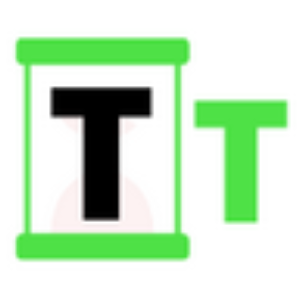WhiteRock Seeks XRP Ledger Integration Into the Federal Banking System
4 min read
In a development that underscores the growing institutional embrace of blockchain technology, WhiteRock has formally requested a meeting with the U.S. Federal Reserve to explore the integration of XRP Ledger (XRPL) into the nation’s federal banking system. This bold initiative was revealed in a post on X by prominent crypto analyst Haliuzzi, who called the proposal a clear demonstration of “real-world utility in motion.” The news arrives at a pivotal moment for XRP and Ripple, as momentum continues to build around the asset’s use in global finance. If successful, this proposal could significantly reshape how U.S. banks handle compliance, security, interoperability, and settlement, leveraging XRP Ledger’s unique architecture for enhanced efficiency and scalability. JUST IN: @WhiteRock has formally requested a meeting with the Federal Reserve to discuss integrating XRP Ledger tech into the U.S. federal banking system! The proposal highlights: Enhanced AML/KYC compliance Interoperability with payment systems Enterprise-grade security… pic.twitter.com/eTzeiXQD0t — Haliuzzi (@hali_uzzi) April 24, 2025 A Step Toward Blockchain-Enabled Federal Infrastructure WhiteRock’s request marks a notable shift in the dialogue between blockchain innovators and central banking institutions. The company’s proposal focuses on deploying XRP Ledger technology as a backbone for digital settlement and compliance operations in the U.S. financial system. Unlike speculative or experimental blockchain proposals, this initiative is grounded in the practical benefits of XRPL, including enterprise-grade security, real-time scalability, and robust interoperability with legacy payment infrastructure. The timing is especially relevant as central banks across the globe, including the European Central Bank and the Bank of England, accelerate efforts to modernize payment systems. A Federal Reserve engagement with a decentralized network like XRPL would signal a profound endorsement of public blockchain innovation in the traditionally conservative U.S. banking sector. Enhancing AML and KYC Compliance Through XRPL One of the cornerstone claims in the proposal is XRPL’s ability to elevate Anti-Money Laundering (AML) and Know Your Customer (KYC) compliance. XRPL’s transparent and immutable ledger, combined with smart contract capabilities and interoperability, could allow financial institutions to maintain real-time compliance oversight across both domestic and international transactions. In essence, the technology would serve as a compliance-first bridge between institutions, allowing for tighter controls, automated reporting, and seamless verification—all while maintaining the privacy and decentralization principles that blockchain advocates champion. For regulators like the Federal Reserve, such a solution could help close the gap between innovation and oversight. Built-In Interoperability for Seamless Payments Another focal point of WhiteRock’s proposal is XRPL’s native interoperability with existing financial networks. The ability to integrate smoothly with the Federal Reserve’s systems, like Fedwire or the upcoming FedNow real-time payments service, could offer immense advantages, enabling faster settlement times and reducing costs traditionally associated with cross-border payments and clearinghouses. The XRPL is uniquely suited for such integration, having been designed with interledger communication and tokenization of fiat currencies, securities, and other financial instruments in mind. WhiteRock’s initiative envisions a future in which XRPL serves as a universal protocol layer, acting not only as a ledger of record but as a tool for connecting disparate banking technologies. We are on twitter, follow us to connect with us :- @TimesTabloid1 — TimesTabloid (@TimesTabloid1) July 15, 2023 Security, Speed, and Scale: Enterprise-Grade Infrastructure The XRP Ledger’s infrastructure is already known for its efficiency, handling up to 1,500 transactions per second with near-instant finality and low costs. For federal-scale banking systems, such performance could revolutionize the way financial institutions process payments, manage liquidity, and interact with central banks. Security is another key selling point. The ledger has operated without incident since its inception in 2012, with its decentralized consensus mechanism offering resistance to traditional attack vectors that often plague centralized financial networks. These attributes form the foundation of WhiteRock’s pitch to the Fed: a resilient, scalable, and proven technology ready for real-world integration. The Broader Implication: Institutional Confidence in XRP Haliuzzi’s commentary reflects the broader optimism in the XRP community and among blockchain advocates. The prospect of a formal conversation between WhiteRock and the Federal Reserve is not only symbolic of XRP’s institutional maturation—it also reaffirms that blockchain utility is no longer theoretical. As Haliuzzi emphasized, “The shift is happening.” And indeed, the narrative around XRP has moved from regulatory uncertainty to government-level adoption strategies. This development follows recent milestones such as the approval of XRP-related ETFs, the launch of regulated XRP futures on CME Group, and growing central bank interest in the XRPL for CBDC pilots. Together, these events signify that XRP is increasingly viewed as more than just a digital asset—it is a platform for programmable finance and financial reform. A Quiet Revolution Taking Shape WhiteRock’s move to initiate dialogue with the U.S. Federal Reserve marks a potentially historic turning point. While the outcome of the proposed meeting remains uncertain, the proposal itself is a powerful testament to the XRP Ledger’s credibility and technical robustness. From compliance automation to global liquidity facilitation, the XRPL is no longer just an innovative idea—it’s becoming a strategic asset in the eyes of traditional finance. As institutional momentum continues to build, Amelie’s rallying cry —“Buy now or cry later”—may soon take on deeper significance. Whether retail investors or regulatory officials, all eyes are now on how far XRP technology can go in reshaping global finance from the inside out. Disclaimer : This content is meant to inform and should not be considered financial advice. The views expressed in this article may include the author’s personal opinions and do not represent Times Tabloid’s opinion. Readers are urged to do in-depth research before making any investment decisions. Any action taken by the reader is strictly at their own risk. Times Tabloid is not responsible for any financial losses. Follow us on Twitter , Facebook , Telegram , and Google News The post WhiteRock Seeks XRP Ledger Integration Into the Federal Banking System appeared first on Times Tabloid .

Source: TimesTabloid



